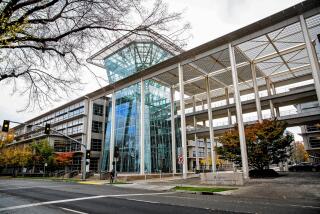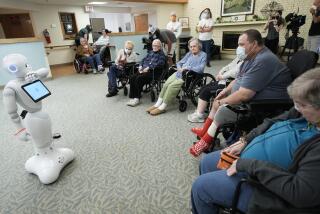Day of reckoning on pensions
The housing bubble and subsequent Wall Street collapse wreaked havoc on the nation’s retirement savings, as many pension funds and 401(k) plans suffered losses of 30% or more. State and local governments are now facing huge unfunded pension liabilities, prompting policymakers to scramble for ways to close the gap without slashing payrolls and services. But a new report from the Little Hoover Commission in Sacramento makes a more troubling point: Many state and local government employees have been promised pensions that the public couldn’t have afforded even had there been no crash.
The commission’s analysis of the problem is hotly disputed by union leaders, who contend that the financial woes of pension funds have been overblown. The commission’s recommendations are equally controversial: Among other things, it urges state lawmakers to roll back the future benefits that current public employees can accrue, raise the retirement age and require employees to cover more pension costs. Given that state courts have rejected previous attempts to alter the pensions already promised to current workers, the commission’s recommendation amounts to a Hail Mary pass. Yet it’s one worth throwing.
A bipartisan, independent agency that promotes efficiency in government, the Little Hoover Commission studied the public pension issue for 10 months before issuing its findings Thursday. Much of the 90-page report is devoted to making the case that, to use the commission’s blunt words, “pension costs will crush government.” Without a “miraculous” improvement in the funds’ investments, the commission states, “few government entities — especially at the local level — will be able to absorb the blow without severe cuts to services.”
The problem is partly demographic. The number of people retiring from government jobs is growing rapidly, and longer life expectancies mean that a growing number of retirees will collect benefits for more years than they worked. But the report argues that political factors have been at least as important in driving up costs, starting with the Legislature’s move in 1999 to reduce the retirement age for public workers, base pensions on a higher percentage of a worker’s salary and increase benefits retroactively. The increases authorized by Sacramento soon spread across the 85 public pension plans in California.
Compounding the problem, the state has increased its workforce almost 40% since the pension formula was changed and boosted the average state worker’s wages by 50%. Local governments, meanwhile, raised their average salaries by 60%. Much of the growth came in the ranks of police and firefighters, who increased significantly in number and in pay.
There’s nothing inherently wrong with generous pension plans. Pensions, after all, are just a form of compensation that’s paid after retirement, not before. The problem, particularly for local governments, is that the plans are proving to be far costlier than officials anticipated or prepared for. By their own reckoning, the 10 largest public pension systems in California had a $240-billion shortfall in 2010.
When the funds don’t have enough money to cover their long-term liabilities, state and local governments are compelled to increase their contributions. In Los Angeles, the report says, the city’s retirement contributions are projected to double by 2015, taking up a third of the city’s operating budget. It projects that governments throughout the state will have to raise their contributions by 40% to 80% over the next few years, then maintain that higher rate for three decades.
The more tax dollars governments have to devote to pensions, the more they’ll have to take from other programs or from taxpayers. That means more layoffs or pay cuts for public employees, higher taxes, fewer services, or all of the above.
The situation won’t be so dire if the plans earn more on their investments than expected. But with the plans typically counting on annual returns near 8%, or twice the “risk-free” level suggested by some analysts, it seems just as likely that they’ll earn less than that, forcing local governments to contribute even more.
The Legislature and some local governments have sought to ameliorate the situation by reducing benefits for new hires and persuading current workers to contribute more to their pension funds. The commission’s report, however, argues that these moves aren’t sufficient. The savings from the lower pensions for new employees won’t be realized for many years, and the increased contributions aren’t nearly enough to close the funding gap.
The only real solution, the report contends, is to reduce the benefits that current employees are slated to earn in the coming years. That’s hard to do. California courts have held that pensions for current employees can be increased without their approval, but not decreased unless they’re given a comparable benefit in exchange. Nevertheless, the commission calls on the Legislature to give itself and local governments explicit authority to trim the benefits that current employees have not yet accrued, without touching the amounts they have already earned. It also calls for a hybrid retirement plan that combines a smaller pension with a 401(k) plan and Social Security benefits, as well as the elimination of a variety of loopholes used to inflate pensions.
The commission is right about the importance of reducing the liabilities posed by current employees. And though picking a fight with unions over unilateral reductions in pensions probably isn’t the solution, the report should persuade both sides to do more at the negotiating table to prevent pension costs from swamping state and local budgets. As the commission notes, public employees in California enjoy some of the most generous pension plans in the country. Those plans won’t do them much good, however, if their employer can’t afford to keep them on the payroll.
More to Read
A cure for the common opinion
Get thought-provoking perspectives with our weekly newsletter.
You may occasionally receive promotional content from the Los Angeles Times.






